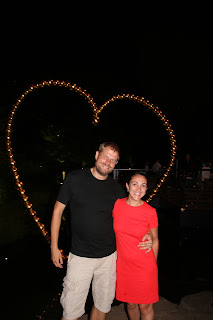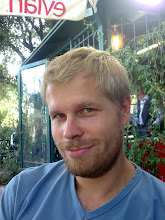Our stay in Japan was, sadly, coming to an end. But we still had a few days to spend in Tokyo before that. No problem with that, Tokyo is, unsurprisingly, one of our favourite cities in the world. This time around, we were staying at a business hotel in Nihonbashi. Not one of the most charming neighbourhoods of Tokyo, but centrally and conveniently located.

The plan was to meet our good friend and excellent Tokyo guide for dinner, but before that, we had a few hours to kill. So we decided to walk around kind of randomly near our hotel. We ended up at the Tokyo main station, a rather impressive building with, naturally, a rather underground impressive shopping centre. Just across the street, we discovered a rather interesting shopping centre called Kitte. Kitte is Japanese for stamp, which makes sense, as the place used to be the main post office of Tokyo. It was a pretty cool place, we particularly enjoyed the Sumo exhibition. A profound experience that changed me, as you can see from the photo.
Next stop was Tokyo International Forum, a rather impressive piece of modern architecture, built in 1996 by Rafael Viñoly. It's a big conference/exhibition centre, this time there didn't seem to be anything on display, so the place was almost deserted. Kind of nice, it was almost as if though we had the entire place to ourselves.
From there, we walked back to our hotel, crossing the Ginza district, apparently a Mecca for shoppers.
After a quick stop at the hotel, we jumped on the train to Kita-Senju station, where we were meeting our good friend Matsuoka for dinner. Expectations were high, as always, when Matsuoka-san takes us for dinner. Much to our delight, he took us to the same place we had a simply unbelievable meal last time we were in Tokyo. And we weren't disappointed this time around either. It was all about fish. We had quite simply the best sashimi ever here, after which we got to pick our fish, which the friendly chef kindly grilled for us. Yet another unbelievable meal - and great to catch up with Matsuoka as well, of course!

The next day, we finally managed to visit the Ghibli museum. We already wanted to do it last time we were in Japan, but it's not the easiest museum to visit, as tickets need to be booked well in advance. Again, or good friend Matsuoka helped us out, and got us the tickets. The museum is located a bit outside of Tokyo, in the Inokashira park, in Mitaka. Mitaka itself seems like a pretty cool place, the main street is lined up with quirky-looking shops and restaurants. Inokashira park is very nice too, with its zoo, and a nice little temple.
The museum itself is just what one could expect from somehting that's the fruit of Miyazaki's imagination . The museum building itself, and the surrounding park, is like something from one of his movies. It's quite a lovely place, with plenty of stuff to see and do for kids and adults a like. I particularly liked the collection of sketches and books (which I suppose fed Mr Miyazaki's fertile imagination....
). And of course we got a ticket to see a short story in the movie theatre as well (which showed the Ghibli magic we love so much). So we loved the place. But just be aware, I'm a Ghibli fan, if you are not one, you might not appreciate this place quite as much as we did.
The plan was to have lunch with Matsuoka and his son afterwards. Matsuoka picked us up with his car, and took us to Jidanju temple, which is actually the 2nd oldest temple in Tokyo (it was originally built in 733). A rather lovely place to walk around. The reason we were here, though, is that this is the best place in Tokyo to have soba noodles - there are loads of shops/restaurants to choose from around the temple. Predictably, we had a great meal. And nice to meet Matsuoka's son finally!
For the evening, we decided to head to Shimokitazawa
, which, apparently is THE hipster neighbourhood in Tokyo. And certainly it's a pretty cool place to walk around, with plenty of quirky and trendy shops to check out. I did feel a little bit out of place, mind you ;-) Anyway, once we'd had our dose of shopping, we found a nice little place where we had yakitori for dinner. Yummie.
We decided to start the next day with a museum. We decided to go for National Showa Memorial Museum, located just next to the imperial palace. It's a pretty interesting museum, telling the story of life in Tokyo during World War 2, and also Japan's development in the aftermath of the war. Pretty grim stuff, but well worth the visit. Afterwards, we checked out the controversial Yakusuni shrine (controversial because a number of war criminals are buried there, and because it's a place often visited by Japanese Nationalists).

Next, we decided to head towards Kagurazaki, for two reasons. First of all, our guidebook recommended a restaurant there, 2nd of all, it's one of the few remaining places in Tokyo where one can apparently see real geishas. So off we went - it turned out to be a bit of a long walk in the end (funnily enough, we crossed the French part of Tokyo during our walk - I ended up buying a French book about Japanese history, some light reading for the flight back then!). Unfortunately, the restaurant was closed by the time we located it, and Kagurazaki is actually more of a shopping district than a geisha district these days. Unsurprisingly, we only saw wannabe geishas. Still, there are a couple of quite atmospheric streets that evoke an older era....

Before leaving the area, we decided to visit nearby Koishikawa Korakuen Garden. It's one of the most famous landscape gardens in Tokyo, and rightly so. A real haven of peace in the midst of all the hustle and bustle. It's one of only two gardens in Tokyo that date back to the Edo period, and has been designed a "Special Place of Scenic Beauty". Unfortunately, the weather was a bit dodgy, and the flowers weren't in bloom, so we didn't see the garden at its most beautiful. Still, well worth a visit, should you be in this part of Tokyo.

Our next stop was Azabujuban, located near Roppongi. There was a kind of street festival on, something we've not experienced so far in Japan. Now, usually, Tokyo doens't actually feel particularly stressful, in spite of the huge amount of people living in Tokyo. But this was different - the place was simply completely overrun with people. But, it was quite good fun watching the Japanese go a bit crazy and eat, drink and party. What was quite interesting to note was that loads of young Japanese seem to be quite proud to wear traditional Japanese clothing (Yukatas and Kimonos) - in fact it seems to be more popular with young than older people. We took the opportunity to enjoy that famous Japanese street food. Delicious, as always in Japan. Is it actually possible to eat badly in this country?

From Azabujuban, we carried on to Roppongi, from where we were planning to catch a metro back to the hotel. Not so fast though - in Roppongi the party was also on! The Roppongi Hills Bon-Odori was on! Basically they'd put up a big and colourful stage in the main hall of Roppongi Hills (Roppongi Hills is a huge museum/shopping/entertainment/office complex, almost a miniature city, if you will), where traditional dances were performed. With the enthusiastic participation of the audience (us excluded).
After having checked out the dance performance, we had a walk around Roppongi Hills. Quite an impressive complex, it is, kind of reminded us of the Marina Bay complex in Singapore. We naturally posed for the mandatory heart picture as well.
The next day, sadly, was our last day in Tokyo. But thankfully, we had pretty much a full day ahead of us, so we headed off early, keen to make the most of the remaining time in the city we love so much. Actually, we ended up heading back to Roppongi, since we wanted to check out an exhibition in the National Art Centre. It was a pretty interesting exhibition on anime and computer games. Cool stuff! Pretty impressive, modern building too!
After a quick visit at Tokyo Midtown (another modern shopping complex similar to Roppongi Hills, but slightly less impressive), we started walking towards Tokyo Tower, where we were planning to have lunch. On the way there, we came across rather an unexpected sight, that Mathilde quite appreciated. Just have a look at the picture, I'm sure you can figure it out ;-)
Lunch, then. As this was our last day in Tokyo, we'd decided to spare no expense, and go for a fancy restaurant. After some research, we decided on Tofuya Ukai, a restaurant specializing, unsurprisingly, in tofu. But Tofuya Ukai isn't just any restaurant. There actually used to be a bowling alley on this site, but they tore it down and replaced it with a 200-year old sake brewery, which they had transported from Yamagata prefecture. It's a wonderful building, one really feels like being back in the Edo-era.
The lunch takes place in private rooms, with a view over the amazing garden, which is located in the middle of the building complex. Actually, the whole experience is quite similar to staying in a Ryokan. And the food, oh dear, the food was just amazing. Kaiseki-level food, basically. The theme was Tofu, and it was all good. 'nough said. After hanging around in the garden for a while, we reluctantly left Tofuya and carried on...
The rest of the time that remained to us, we spent doing last-minute souvenir shopping. And then, alas, it was time to head to the airport. As you can probably guess, we felt pretty gutted about leaving, already promising ourselves we'd be back sooner rather than later. Rather than rample on about what we love about Japan, I will just say: Yes, we still love Japan and we will be back soon.




























































